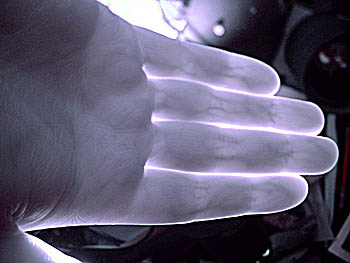Wednesday the 15th, starting at 9:43:32PM, reaches 10 degrees above the NW horizon, maximum altitude of 33 degrees at 9:46:11 in the NNE and fades into shadow then.
Thursday the 16th, two good passes:
8:31:17PM, reaches 10 degrees elevation in the NNW,
8:33:23 maximum elevation of 18 degrees in the NNE,
lowers to 10 degree elevation at 8:35:29 in the ENE
The very next orbit (i.e., you could record the time it takes the space station to completely orbit the earth!):
10:05:53PM, reaches 10 degrees elevation in the NW,
10:07:36 maximum elevation of 32 degrees in the NW and fades into shadow then.
Friday the 17th,
8:53:27PM, reaches 10 degrees elevation in the NW,
8:56:08 maximum elevation of 32 degrees in the NNE;
fades into shadow at 8:57:41 at 19 degrees above eastern horizon.
On Saturday the 18th, a fantastic pass, right overhead!
It reaches 10 degrees elevation at 9:15:45PM in the NW, passes overhead at 9:18:38, and passes into shadow at 9:19:09PM 57 degrees above the ESE horizon.
All predictions are from
Heavens-Above.
Again, what you'll see is a moving, steady point of light that may be one of the brighter objects in the evening sky, possibly brighter than Jupiter, which is shining in the south. If the object has more than one light, or blinks, you are seeing an aircraft. The color can range from pure white to orange; it's orange when the solar panels on the station are facing the right way; it also fades into an orange when the sun is setting at the space station.
I have some images from last month's
Space Shuttle mission to the ISS here.




